Current Affairs Quiz 27 December 2024 with Answers
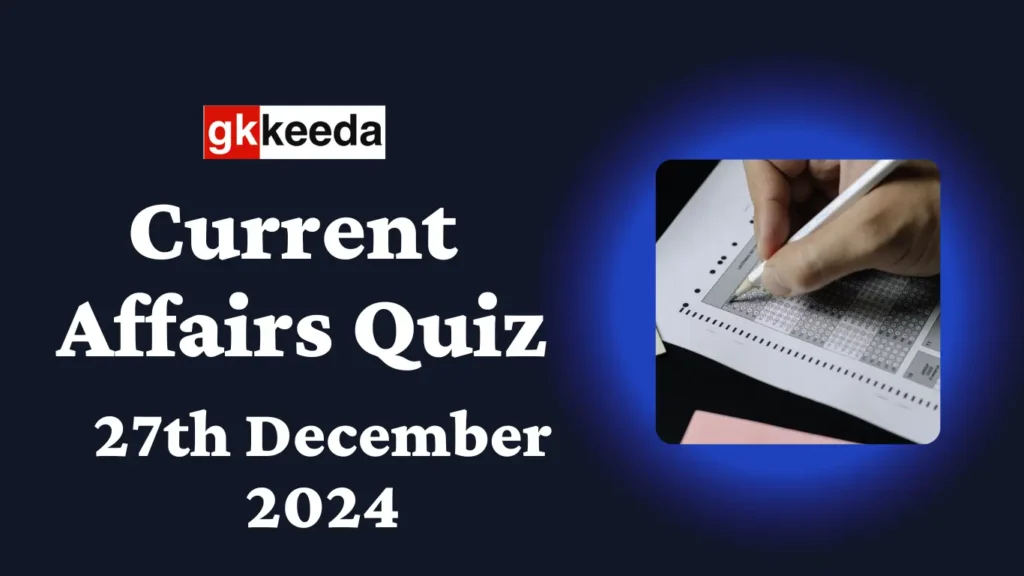
Are you searching for a daily current affairs quiz that includes answers and covers all important topics from an exam perspective, such as UPSC Prelims and State PCS? If yes, you’ve come to the right place!
This current affairs quiz includes recent questions and answers. You can attempt it as a daily MCQ quiz for UPSC.
In our daily current affairs quiz, we strive to cover a variety of sources, including Vision IAS Daily Current Affairs, PIB, and newspapers such as the Indian Express, The Hindu, and The Economic Times.
Topics covered in today’s Current Affairs Quiz
Q1. Consider the following statements regarding the UN Convention against Cybercrime:
(1). It is the UN’s first legally binding instrument on cybercrime.
(2). It requires member states to enact domestic laws that make unauthorized access to information illegal.
Which of the following statements given above is/are correct?
(A). 1 only
(B). 2 only
(C). Both 1 & 2
(D). Neither 1 nor 2
Show Answer
Correct Answer: (C)
Explanation:
Context: The United Nations General Assembly recently adopted the Convention against Cybercrime, which will be open for signature in Vietnam in 2025.
It will enter into force 90 days after being ratified by 40 signatories.
Objective:
- It aims to strengthen international cooperation to combat cybercrime and protect societies from digital threats.
Key provisions of the convention
- It is the UN’s first legally binding instrument on cybercrime. Hence, statement 1 is correct.
- This will not take the form of domestic legislation. States have to enact domestic legislation making it illegal to breach information and communication without authorization. Hence, statement 2 is also correct.
- It encourages member states to cooperate in investigating, sharing evidence, and prosecuting cybercrime while upholding the principles of sovereignty, territorial integrity, and non-intervention in domestic affairs.
- It requires member states to make it illegal to produce, sell, distribute, and broadcast child sexual exploitation material.
Q2. The UN’s Almaty Programme of Action 2003 is related to
(A). Address population and development issues globally.
(B). Prevent the proliferation of small arms and light weapons.
(C). Provide a framework for financing sustainable development.
(D). Address the special needs of Landlocked Developing Countries (LLDCs).
Show Answer
Correct Answer: (D)
Explanation:
Context: The UN General Assembly recently adopted the Programme of Action for Landlocked Developing Countries (LLDCs) for 2024-34.
It builds on the Vienna Programme of Action (2014-2024) and the Almaty Programme of Action (2003), which laid the groundwork for addressing problems faced by LLDCs.
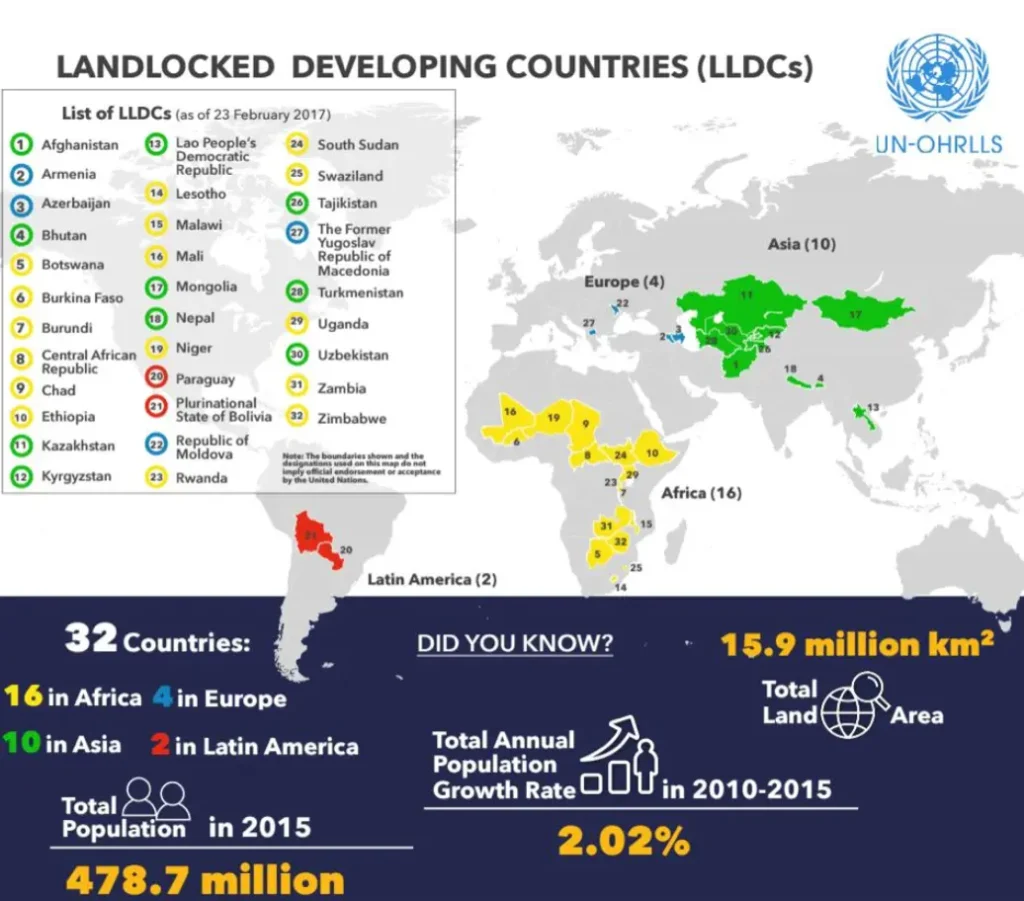
Key targets
- Boost labour productivity and job opportunities by 50% by 2034.
- Provide support in developing industrial parks and Special Economic Zones (SEZ).
- Reduce/eliminate unjustified non-tariff barriers and double merchandise exports by 2034.
- Effective implementation of the WTO Agreement on Trade Facilitation in all LLDCs.
- Effective implementation of the Sendai Framework for Disaster Risk Reduction 2015-30 will reduce disaster risks in LLDCs.
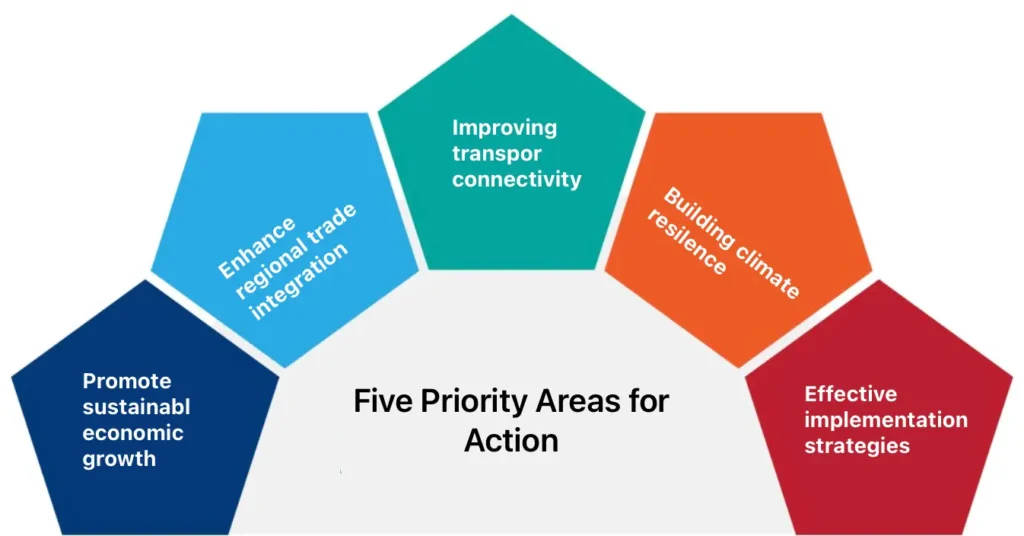
Q3. Identify the two doubly landlocked countries.
(A). Liechtenstein & Uzbekistan
(B). Uzbekistan & Switzerland
(C). Liechtenstein & Lesotho
(D). Kyrgyzstan & Uzbekistan
Show Answer
Correct Answer: (A)
Explanation: Uzbekistan and Liechtenstein are the only two countries in the world that are doubly landlocked.
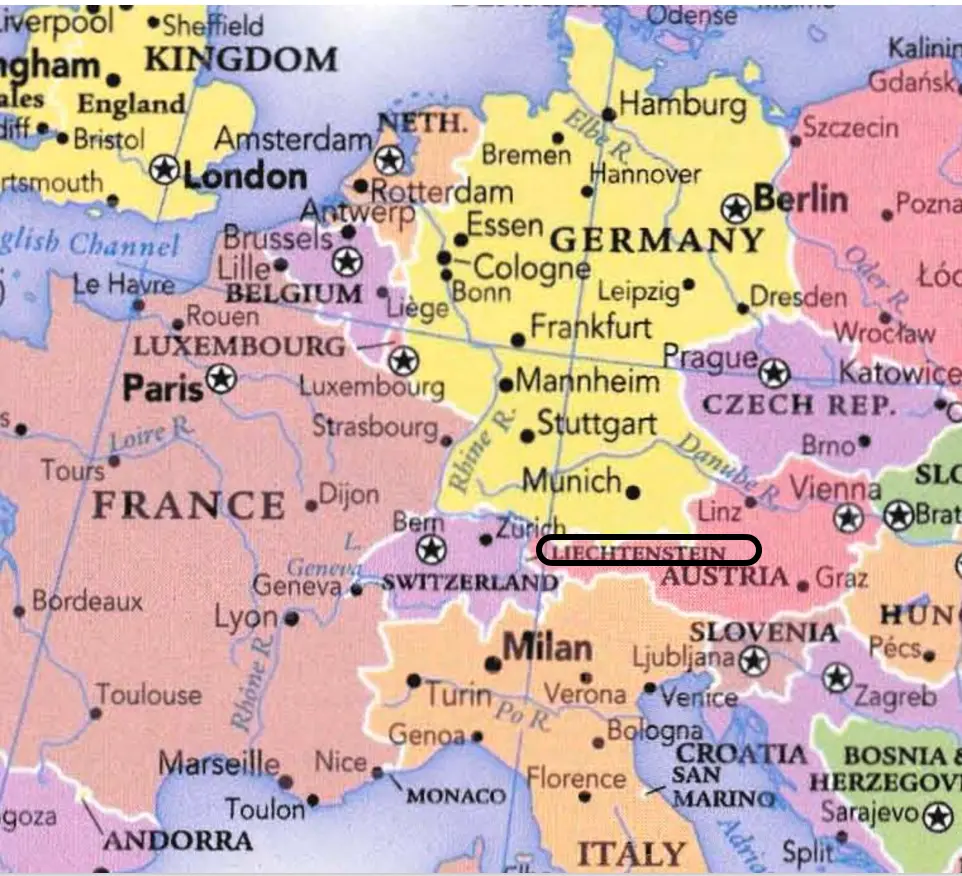

Q4. Consider the following statements regarding the Telecommunications (Procedure and Safeguards for Lawful Interception of Messages) Rules, 2024:
(1). The Union Home Secretary, the Home Secretary at State Government, or an officer not below the Joint Secretary with proper authorization are competent to issue interception orders.
(2). Once an order is issued, it will remain valid for 90 days.
(3). Interception records must be destroyed every six months unless required for functional purposes or as directed by a court.
Which of the following statements given above is/are correct?
(A). 1 & 2 only
(B). 2 & 3 only
(C). 1 & 3 only
(D). 1, 2 & 3
Show Answer
Correct Answer: (C)
Explanation:
Context: Recently, the Government of India has notified “Telecommunications (Procedures and Safeguards for Lawful Interception of Messages) Rules, 2024” under the Telecommunication Act, 2023.
It will replace Rules 419 and 419A of Indian Telegraph Rules, 1951.
Key points of the Rules
1. Power to issue orders
- Competent Authority: Union Home Secretary or Home Secretary at the State level or an officer not below the rank of Joint Secretary with proper authorization. Hence, statement 1 is correct.
- Authorised Agency: any agency authorised by the Central Government.
- For remote areas, the head or second senior is the most important officer of the authorised agency.
- Interception orders are valid for 60 days and can be extended to 180 days. Hence, statement 2 is incorrect.
2. Authorized agencies must appoint two nodal officers to communicate interception orders to the DoT’s or telecom entity’s nodal officer.
3. Safeguard mechanism:
- A central review committee, led by the Cabinet Secretary, and State Review Committees review interception orders bi-monthly to ensure compliance.
- Interception records must be destroyed every six months unless required for operational needs or court orders. Hence, statement 3 is correct.
Q5. Regarding the Brahmaputra River, consider the following statements:
(1). It originates from Chemayungdung Glacier in the Tibet Plateau, near Mount Kailash.
(2). It forms the world’s largest river island, Majuli, in India.
(3). The river flows through Arunachal Pradesh, Assam, and Meghalaya before entering Bangladesh.
Which of the following statements given above is/are correct?
(A). 1 & 2 only
(B). 2 & 3 only
(C). 1 & 3 only
(D). 1, 2 & 3
Show Answer
Correct Answer: (D)
Explanation:
Context: Recently, China has approved the construction of the world’s largest hydropower dam on the Brahmaputra River.
It will be located in the lower reaches of the Yarlung Zangoo River at a huge gorge in the Himalayas, where the river makes a U-turn to flow into Arunachal Pradesh.
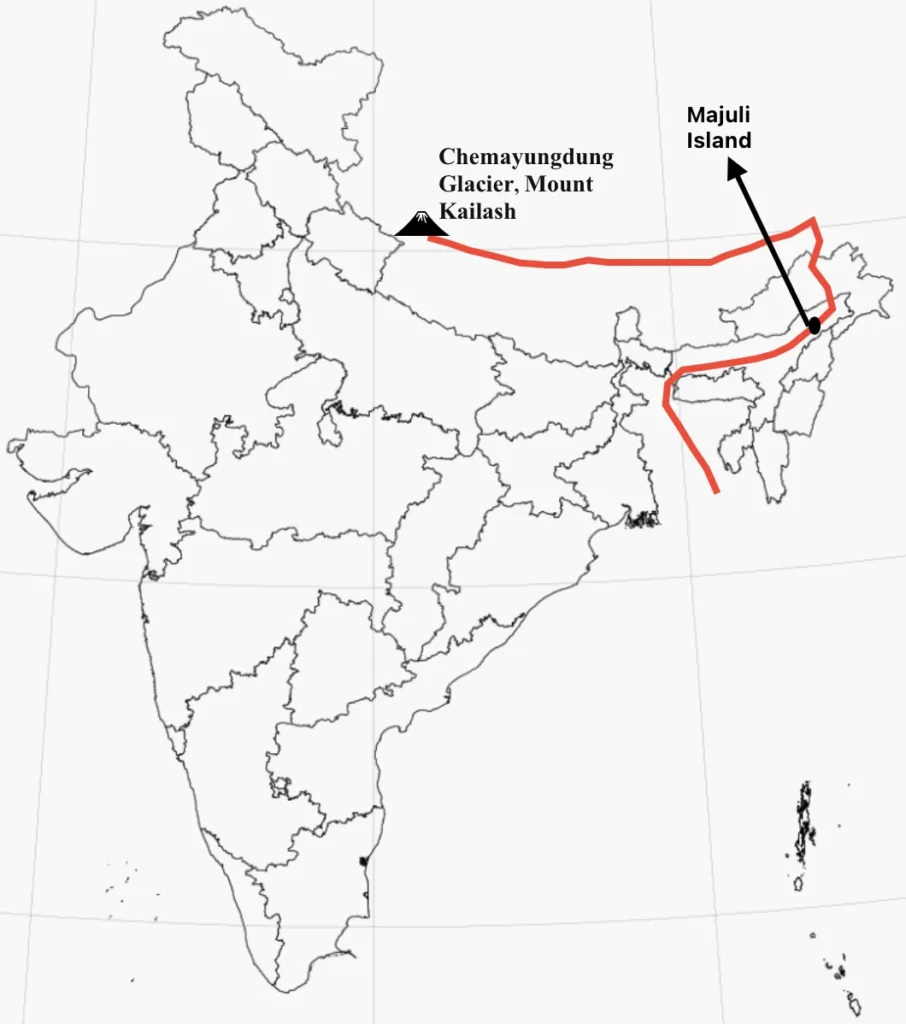
About Brahmaputra River
- It is a transboundary river that originates in the Mansarovar Lake region near Mount Kailash on the northern side of the Himalayas in Tibet. It is also known as the Yarlung Tsangpo River. Hence, statement 1 is correct.
- It enters India near the village of Gelling in Arunachal Pradesh and flows southwest through Assam as Brahmaputra and south through Bangladesh as Jamuna. Hence, statement 3 is incorrect.
- Majuli is the largest riverine island located in Assam, India, formed by the Brahmaputra River.
Q6. Recently, an 8-member committee headed by Dr. Pushpak Bhattacharyya was in the news. What is this committee related to?
(A). Expending manufacturing sector contribution to the GDP.
(B). Ethical use of AI in the financial sector.
(C). Allocation of critical minerals blocks.
(D). Diversifying India’s export portfolio beyond the traditional sector.
Show Answer
Correct Answer: (B)
Explanation:
Context: Recently, RBI formed an 8-member committee under Dr. Pushpak Bhattacharyya to develop a Framework for Responsible and Ethical Enablement of Artificial Intelligence (FREE-AI) in the financial sector.
Applications of AI in the Financial Sector
- Improving operational efficiency by automating repetitive and time-consuming tasks, such as processing loan applications.
- AI-powered chatbots and virtual assistance to improve customer interactions.
- Improved decision-making through AI-enabled predictive analytics that forecast market trends.
Q7. Identify the state most affected by arsenic contamination of groundwater in India.
(A). Kerala.
(B). Meghalaya
(C). Rajasthan
(D). West Bengal
Show Answer
Correct Answer: (D)
Explanation:
Context: According to the conclusions of the Patna-based Cancer Research Centre, high Arsenic levels have been detected in staple food in 11 districts of Bihar.
West Bengal, Bihar, Uttar Pradesh, Assam, Haryana, Punjab, Jharkhand, Manipur, and Chhattisgarh are the states most affected by arsenic contamination of groundwater.
Q8. According to the National Rainfed Area Authority (NRAA), what percentage of the country’s net sown area is classified as rainfed?
(A). 21%
(B). 41%
(C). 51%
(D). 71%
Show Answer
Correct Answer: (C)
Explanation:
As per NRAA, 51% of the country’s net sown area accounts for 40% of the food production in rainfed areas.
Q9. Which two geographical regions is the Davis Strait located between?
(A). Greenland and Iceland
(B). Greenland and Canada
(C). Canada and Iceland
(D). Iceland and Norway
Show Answer
Correct Answer: (B)
Explanation:
Context: US President Donald Trump is interested in buying Greenland from Denmark.
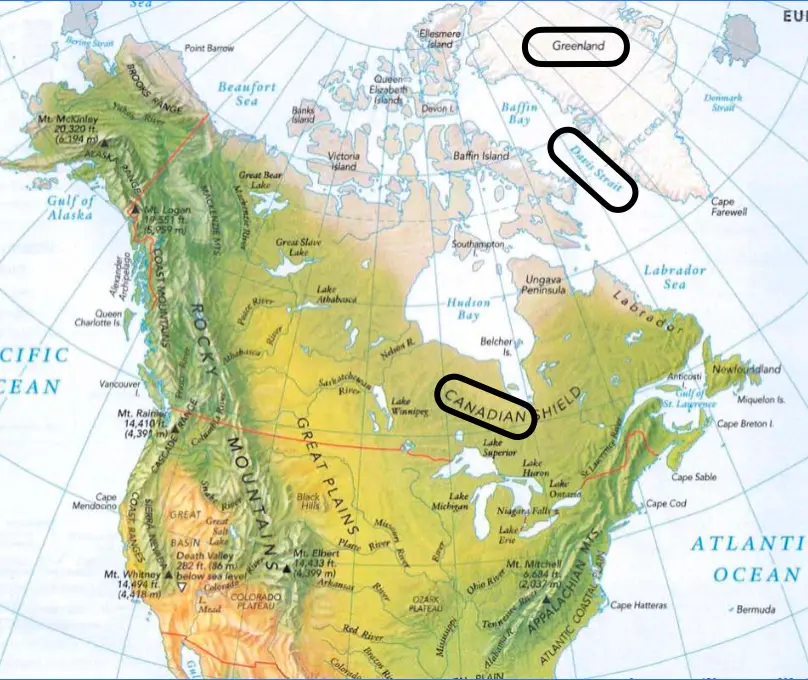
Q10. Which ministry launched the Viksit Panchayat Karamyogi initiative?
(A). Ministry of Panchayati Raj
(B). Ministry of Education
(C). Ministry of Culture
(D). Ministry of Personnel, Pubic Grievances & Pension
Show Answer
Correct Answer: (D)
Explanation:
Context: On Good Governance Day, the Ministry of Personnel, Public Grievances and Pension launched the “Viksit Panchayat Karmayogi” initiative as part of the broader “Prashashan Gaon Ki Aur” campaign.
Objective
- It aims to enhance the capacity and competence of PRIs by equipping elected representatives and government officials with the tools and knowledge required for effective governance and participation.
That’s all for today! How did you find the quiz?
Please comment on how many questions you answered correctly.
Wishing you all the best! See you tomorrow with a new and exciting quiz.

No Comment! Be the first one.